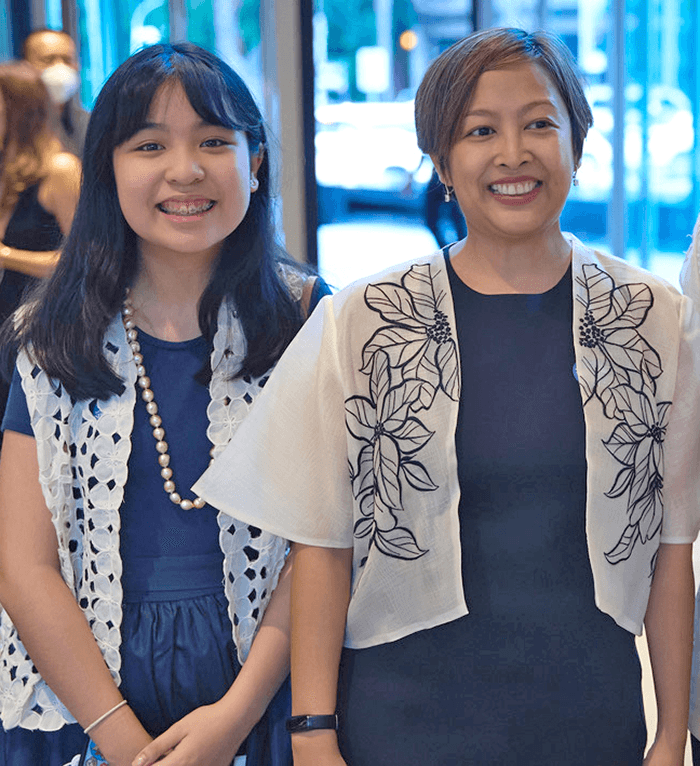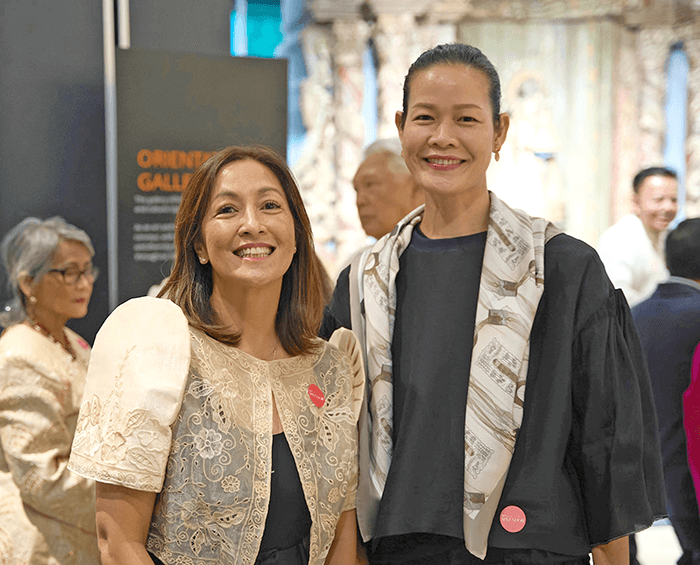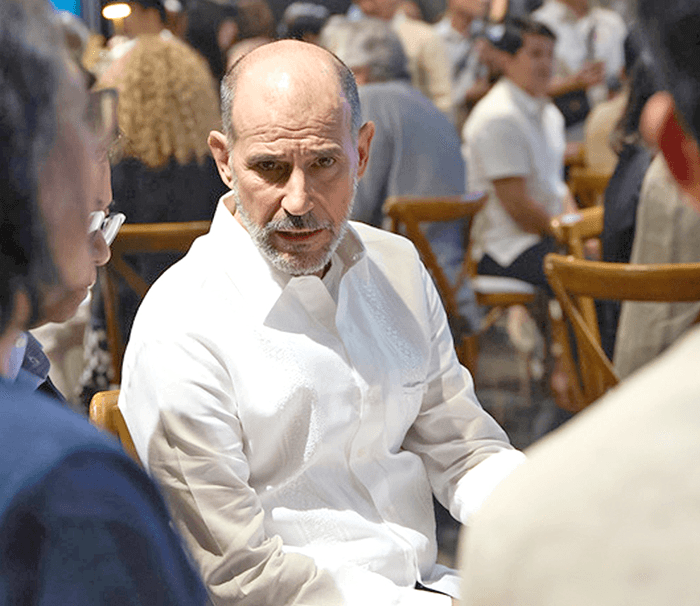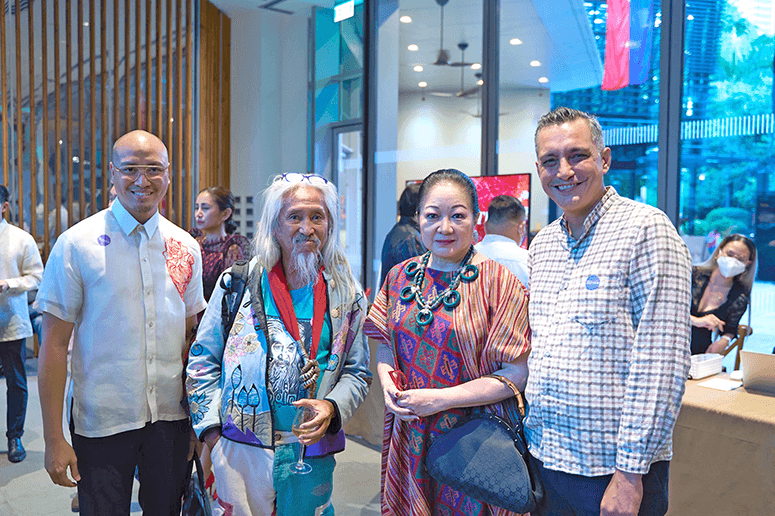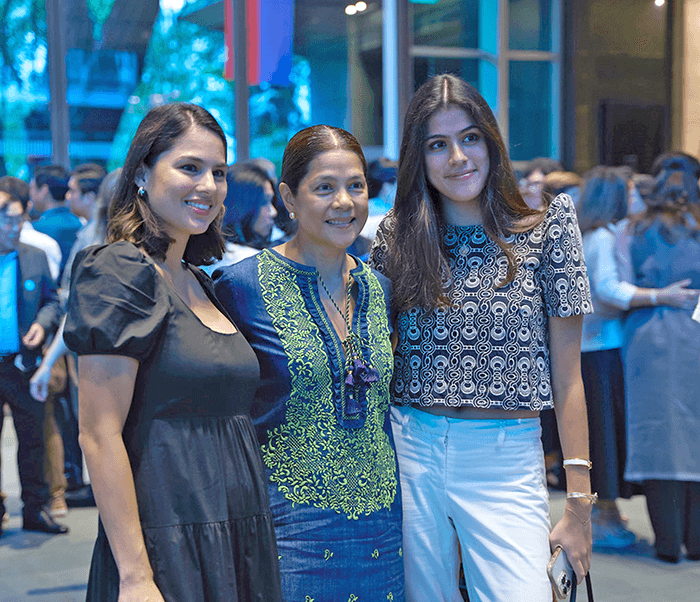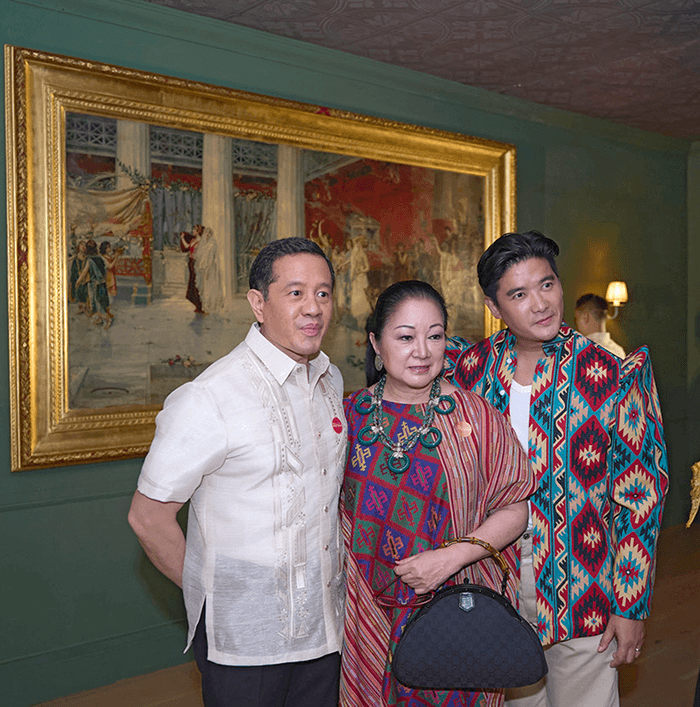Splendid at the Juan Luna ‘Splendor’ Cocktails
Collectors, cognoscenti, and cultural titans turned out for the first-ever viewing of the “holy grail” of Philippine art, “Hymen, oh Hymenee” at the Ayala Museum at the start of the long Independence Day weekend.
Leading the celebrations were Mariles Gustilo, director of the museum alongside fellow conspirator Jaime Ponce de Leon of Leon Gallery, who had succeeded in keeping the entire project under wraps for almost an entire year away from Manila’s most prying eyes and wagging tongues.
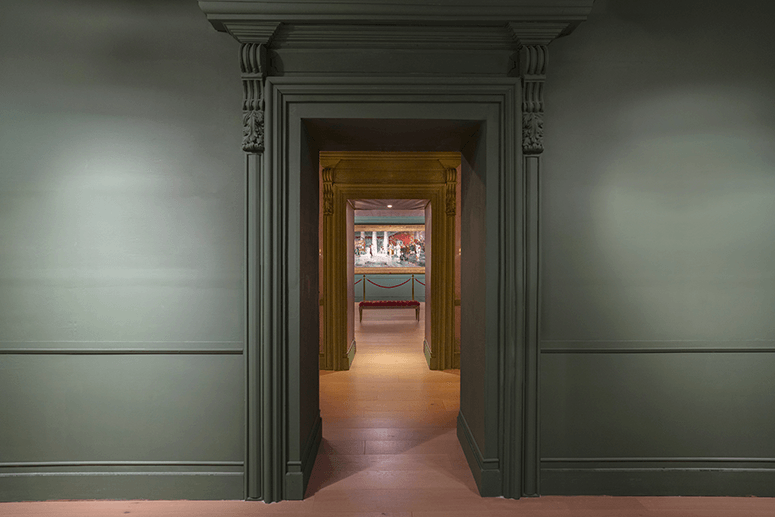
One party-hardened veteran was heard to blurt out, “This event is just mammoth—one of the biggest I’ve attended since the parties of the Imeldific in the ’80s. There are friends who I haven’t seen in decades, so many that all I could do was say, ‘Hi!’ It was impossible to even catch up. It is an unbridled success! It was a sea of ternos, kimonas, barong and balintawaks in keeping with the invite’s instruction for ‘Filipiniana.’”

After all, how often does a long-lost masterpiece find its way home and not so much into private hands but to a very public run for all of the country to enjoy? Under the terms of the agreement with Ayala Museum, “Hymen, oh Hymenee” will be lent for a whopping three years to its August halls. The current show, masterminded by the country’s top exhibition designer Gino Gonzales, delivers an immersive experience alongside a fascinating documentary by Paris-based filmmaker and Juan Luna expert Martin Arnaldo.
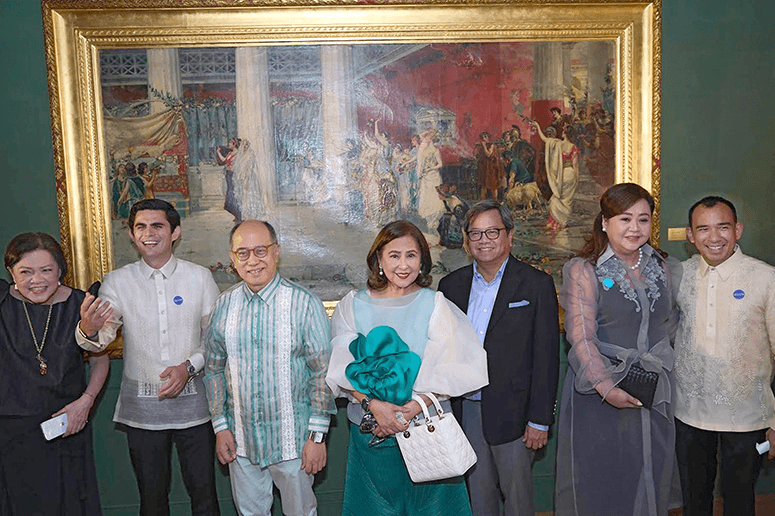
Measuring roughly 50 by 100 inches, the artwork depicts a Roman wedding with a cast of characters that includes not only the bride (plus a mother-in-law or possibly a high priestess), 10 bridesmaids, but also three pages, a soldier, wine-bearers, musicians, fortune-tellers, handmaidens of various gods, sheep and a tortoise of Venus. It’s like viewing a cinematic scene of love and marriage worthy of Francis Ford Coppola—or Peque Gallaga’s Oro, Plata, Mata.
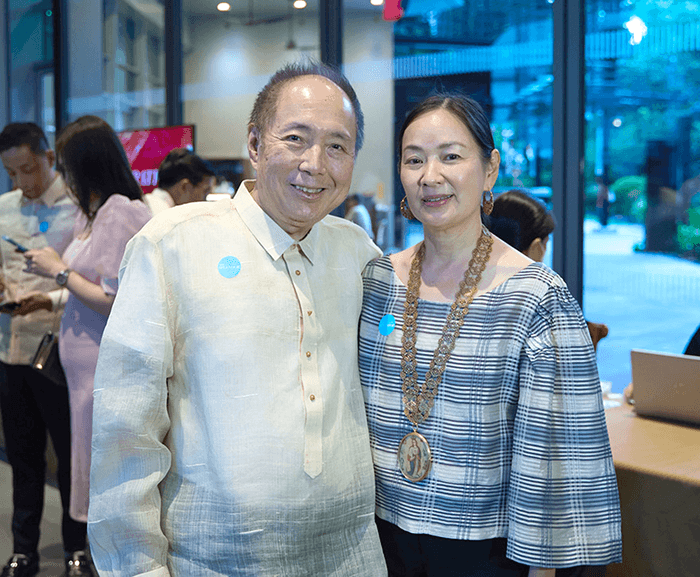
Manila’s own rich tapestry of personalities mirrored the breadth of its scope, beginning with the Zobels—Jaime Alfonso, Sophia and Patxi Elizalde, Patsy with Alex Floro, and Kit Zobel de Ayala. Also representing the ancien regime were Patricia Araneta, Marilou Prieto Lovina, Annie Rocha, the Camposes, led by the affable scion Paul, Ninit and Mickey Paterno with eminent restoration architect Tina Paterno, Joanne Ongpin Duarte, TingTing de los Reyes Cojuangco, Isabel and Mark Caro Wilson, and the brainy ambassadress Rosario Manalo.

Also gathered for the occasion were business stalwarts Cezar Consing and Rene Almendras of Ayala Corp. and Nina Aguas of InLife.
Not to be missed are these names from the art world’s hallowed hierarchy of collecting: Paulino and Hetty Que, Antonio Gutierrez, Kevin Belmonte, the triumvirate of Olivia Yao, Toto Salgado and Ed Cua, Joven Cuanang (the most celebrated patron of the arts from the North), Daniel Zuellig, Fe Rodriguez, Louie and Liza Bate, Ken and Lina Hakuta, Maritess Pineda, Manny and Ina Dizon, Stanley and Abby Chan, Erlinda Panlilio, Lito and Kim Camacho, Rico Quimbo, and the glamorous Nikki Coseteng.
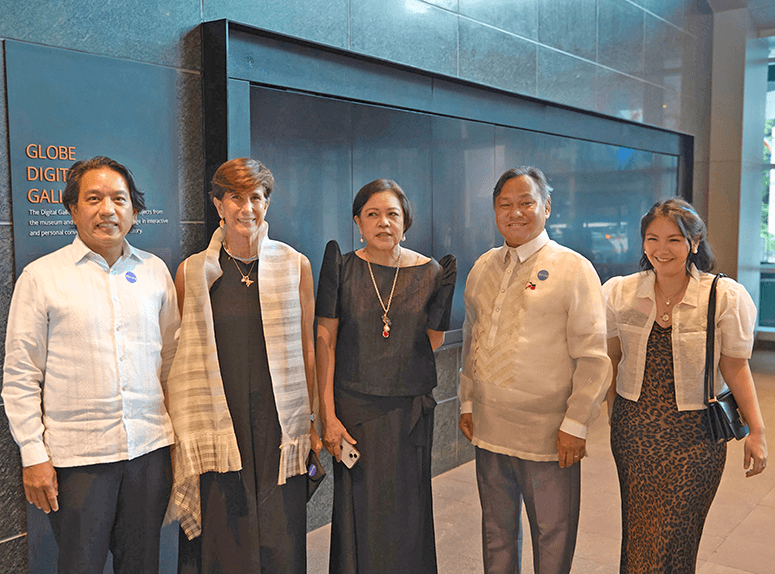
The queen of nouvelle society Alice Eduardo rubbed elbows with culturati such as National Artist Kidlat Tahimik, Ginny Cruz of the Central Bank Collections, the cosmopolitan Ding and Francy Pascual, likable academic Leo Garcia, and architect J. Anton Mendoza. Mayor Abigail Binay and her daughter Martina were among the first to arrive, as did architect William V. Coscolluela of the Makati Central Estate.
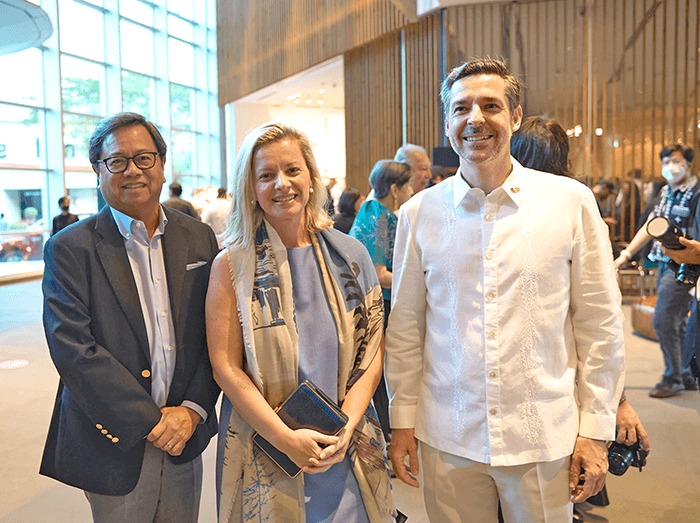
The Spanish ambassador Miguel Utray Delgado hobnobbed with Andoni Aboitiz, chair of the National Museum board, as well as its director, Jeremy Barns, chairman Ino Manalo of the NCCA, chair Manny Calairo and Commissioner Rene Escalante were also present to witness the event. Also seen were Jorge Mojarro of Instituto Cervantes, Atty. Tonico Manahan, kimona-clad muses Melot Sunga and Carrie Gorricheta.
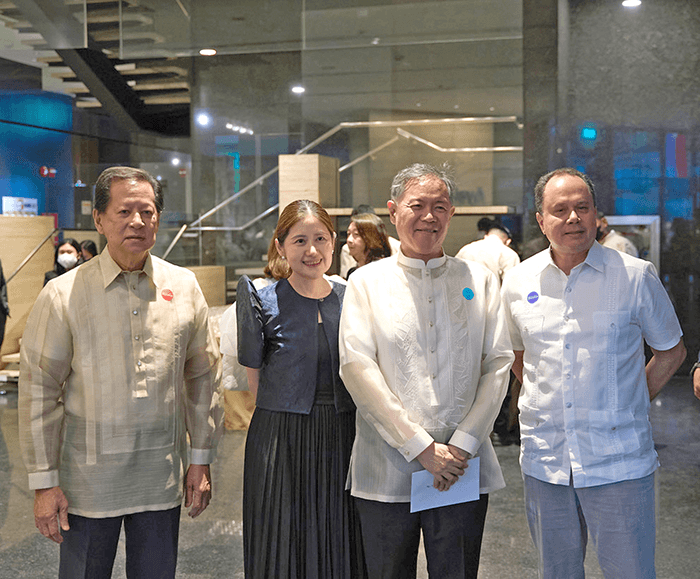
The story of the long-lost Luna masterpiece, “Hymene, oh Hymenee,” begins 134 years ago, when it won a medal at the Universal Exposition of 1889, the very same one that gave us the Eiffel Tower.
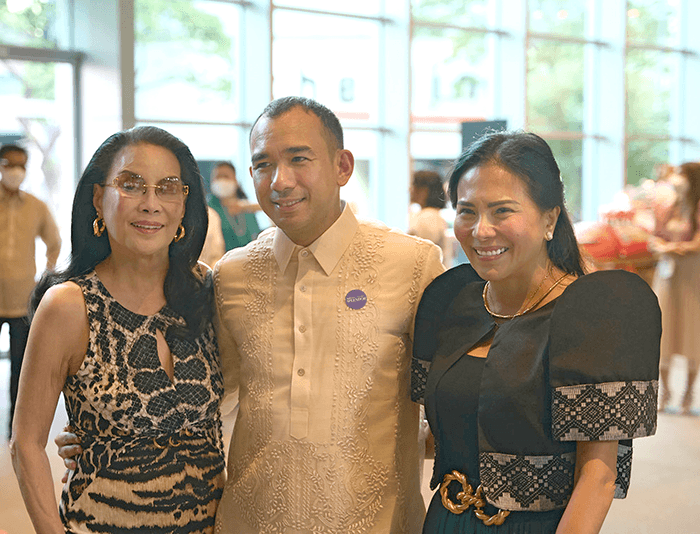
Luna had painted this work of art on his honeymoon with the heiress Paz Pardo de Tavera and the painting went with him everywhere from Venice and Rome, Madrid and Paris.
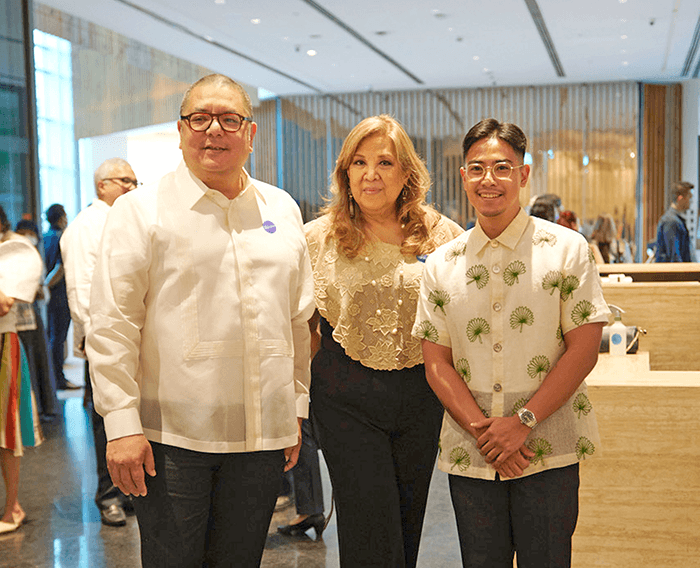
Somewhere in the telling it would become the stuff of legend, the unicorn that every Filipino collector wished to capture but never, ever could find.
There were occasional sightings, which made it even more tantalizing.

Jaime Ponce de Leon, collector and founder of Leon Gallery, said, “Its whereabouts would become unknown for about a hundred years. One document alleged that it was in the collection of the Louvre. Some even speculated it had been burned by the Pardo de Taveras out of their spite for Luna. The mystery of its existence only grew through the engravings and mentions of its splendor in 19th-century publications. But where was it? Nobody knew.”
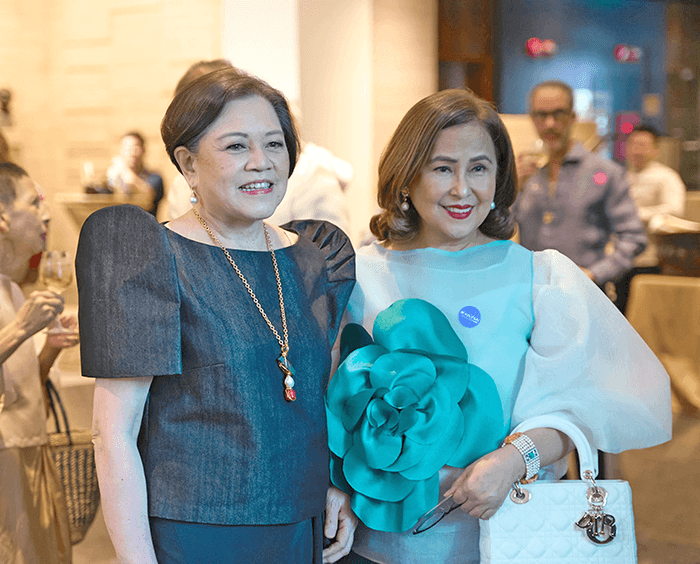
His story began some 15 years ago when he first heard of this treasure. By then, he remarked, “It was the ultimate ‘grail’ of Philippine art. Much talked about by collectors, much revered, but nowhere to be found. That, of course, made it even more tantalizing. It was Dr. Eleuterio ‘Teyet’ Pascual, I believe, who first saw this painting some 50 years ago. His eloquence got the better of him in recounting to me his impressions at first sight. It was, I thought, the greatest painting that didn’t exist.”
Ponce de Leon admitted that he would resort “to haunting galleries, famous and infamous, courting old maids and befriending aging aristocrats” in his quest. Until one day, the unexpected happened: an appointment with destiny, so to speak, to bring the legend home at last—and become the hottest ticket and trending topic of the entire country.


